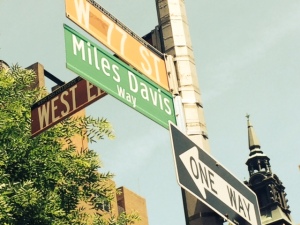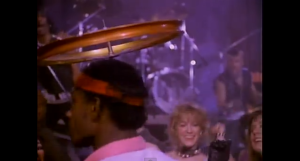Prince does not want to be like DJay or Kanye. More importantly, he’s walked the walk to the beat of a different drum for decades now.

In 1993, during negotiations regarding the release of Prince’s album The Gold Experience, a legal battle ensued between Warner Bros. and Prince over the artistic and financial control of Prince’s output. During the lawsuit, Prince appeared in public with the word “slave” written on his cheek. Prince explained his name change as follows:
The first step I have taken toward the ultimate goal of emancipation from the chains that bind me to Warner Bros. was to change my name from Prince to the Love Symbol. Prince is the name that my mother gave me at birth. Warner Bros. took the name, trademarked it, and used it as the main marketing tool to promote all of the music that I wrote. The company owns the name Prince and all related music marketed under Prince. I became merely a pawn used to produce more money for Warner Bros…
I was born Prince and did not want to adopt another conventional name. The only acceptable replacement for my name, and my identity, was the Love Symbol, a symbol with no pronunciation, that is a representation of me and what my music is about. This symbol is present in my work over the years; it is a concept that has evolved from my frustration; it is who I am. It is my name.
Prince has even been a pioneer in leveraging cyberspace. However as long as artists are fundamentally dependent upon technology other people own in order to produce, perform and distribute their products they will be limited to renegotiating slavery under different terms. and sadly forced to complain about not being able to “get a second chance”. Artists who want to be free need ownership in STEM and the village needs to have greater stake in the revenue generated by our artists. On the surface this sounds like a win-win but in practice it will require a level of sacrifice on the order of the Montgomery Bus Boycott:
Instead of riding buses, boycotters organized a system of carpools, with car owners volunteering their vehicles or themselves driving people to various destinations. Some white housewives also drove their black domestic servants to work. When the city pressured local insurance companies to stop insuring cars used in the carpools, the boycott leaders arranged policies with Lloyd’s of London.
Black taxi drivers charged ten cents per ride, a fare equal to the cost to ride the bus, in support of the boycott. When word of this reached city officials on December 8, the order went out to fine any cab driver who charged a rider less than 45 cents. In addition to using private motor vehicles, some people used non-motorized means to get around, such as cycling, walking, or even riding mules or driving horse-drawn buggies. Some people also hitchhiked. During rush hours, sidewalks were often crowded. As the buses received few, if any, passengers, their officials asked the City Commission to allow stopping service to black communities.[23] Across the nation, black churches raised money to support the boycott and collected new and slightly used shoes to replace the tattered footwear of Montgomery’s black citizens, many of whom walked everywhere rather than ride the buses and submit to Jim Crow laws.
In response, opposing whites swelled the ranks of the White Citizens’ Council, the membership of which doubled during the course of the boycott. The councils sometimes resorted to violence: King’s and Abernathy’s houses werefirebombed, as were four black Baptist churches. Boycotters were often physically attacked.
For starters some shift in how we spend our entertainment dollars has to happen. What would you be willing to do to help jump-start a transformation in the distribution of wealth generated by artists? Right now, without fear of physical retaliation, you can find/support existing independent artists and share/like/email/retweet this post.









You must be logged in to post a comment.